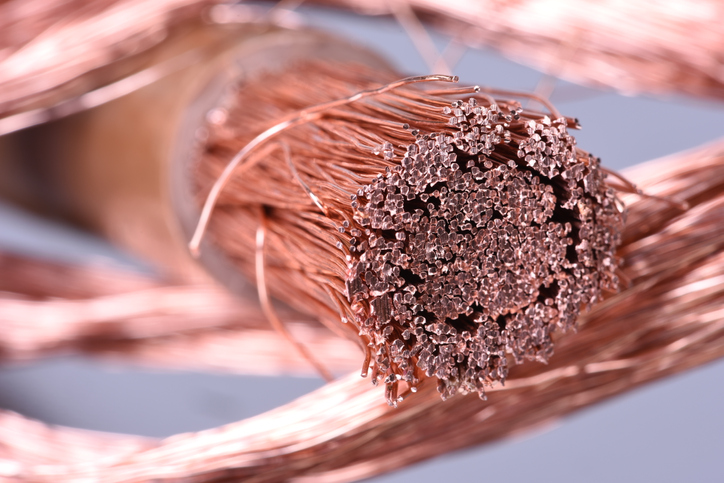As the world relies less on fossil fuels, another natural resource is filling the void. Copper has many benefits — it’s durable, conductive, ductile, and recyclable. It’s a preferred solution in clean energy applications, including solar energy, wind turbines, and energy storage. By 2040, these types of renewable energy are expected to make up 61% of copper consumption.
In this article, we’ll look at how copper is used in renewable energy applications, including solar power, wind turbines, energy storage, and recycling efforts that support a sustainable future.
Copper in Solar Energy Systems: Powering Clean Electricity Generation
Copper has an exceptional ability to conduct electricity. Containing a high density of free electrons, copper enables electrical charges to flow through with little resistance and energy loss.
Copper has multiple uses in solar photovoltaic (PV) systems:
- Copper-based busbars. Photovoltaic cells generate electrical currents when exposed to light. Metal ribbons on the cell surface, known as busbars, collect and distribute the current.
- Copper wiring. Copper can be stretched into thin, flexible wires. These wires connect solar panels and transport the electricity generated by the PV cells.
- Inverter components. Inverters convert direct current (DC) electricity generated by solar panels into alternating current (AC) electricity to supply power grids.
Copper’s Contribution to Wind Turbines: Ensuring Reliable Power Transmission
Wind is expected to be the second largest source of renewable energy globally by 2030, behind solar PV. Copper is used extensively in wind turbine components to generate and transmit electricity:
- Copper windings. As the turbine’s rotors spin, copper coils in the generator pass through a magnetic field. This creates electric currents from the kinetic energy.
- Wiring and cables. Copper wires run along the steel towers, carrying electricity from generators to substations and power grids. More than half the copper used in a turbine is in the wiring, as towers can be hundreds of feet in height.
- Grounding systems. Copper is used in the grounding equipment at the base of each tower for safety. This prevents damage and downtime in case of lightning strikes and power surges.
Copper’s durability and resistance to corrosion are especially beneficial for offshore wind farms, which need significant amounts of cable to reach land in challenging marine conditions.
Copper’s Role in Energy Storage: Supporting Battery and Grid Integration
Renewable energy can be stored in batteries for later use in residential and large-scale projects. Lithium-ion and flow batteries balance supply and demand and improve power grid reliability.
Copper is a key material in battery anodes, wiring, and busbars. Research shows copper, in particular, may improve battery charging, discharging, and life span.
Copper is also used in the cables that connect and effectively transfer electricity between energy sources, batteries, and the power grid.
Sustainability and Recycling: Copper’s Long-Term Role in Green Energy
Copper can be recycled repeatedly without reducing its conductivity and durability. Recycling helps satisfy the growing demand for the metal. About one-third of the world’s copper supply is from recycled sources such as manufacturing scraps and end-of-life products.
Copper recycling uses less energy than mining and extraction, providing cost savings. It also reduces waste and prevents additional carbon emissions. Recovered copper can be used for harnessing, converting, storing, and transmitting wind and solar energy, creating a green, circular economy.
The Future of Copper in Renewable Energy Applications
With its ability to conduct electricity safely and efficiently, copper is paving the way to a greener future. Expanding the capacity of copper recycling will ensure the metal is available long term for clean energy projects. Belmont Metals offers high-quality copper solutions for renewable energy applications. Contact us to discuss your project needs.

